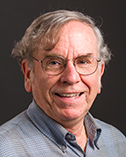
Frederick J. Sigworth
Yale University
|
Primary Section: 23, Physiology and Pharmacology Secondary Section: 29, Biophysics and Computational Biology Membership Type:
Member
(elected 2016)
|
Biosketch
Fred Sigworth is a biophysicist who is interested in the function and structure of ion channel proteins. He grew up in Orinda, California and studied Applied Physics at Caltech, receiving the BS degree in 1974. He subsequently worked on noise analysis of ion channel currents under Charles F. Stevens, and received the PhD in Physiology from Yale University in 1979. Soon after he arrived in Göttingen as a postdoc in 1980, his mentor Erwin Neher made the seminal discovery of tight-seal patch-clamp recordings of ion channel currents. Sigworth developed sensitive amplifiers for recording the small currents, and statistical techniques for analyzing the single-molecule events underlying the time courses of currents. He returned to Yale as a faculty member in 1984, where he has continued to study voltage-gated and ligand-gated ion channels, first by patch-clamp recording and more recently by single-particle cryo-EM techniques. He is currently a professor in Yale's Department of Cellular and Molecular Physiology with joint appointments in Biomedical Engineering and Molecular Biophysics and Biochemistry. He is a member of the Biophysical Society and the American Scientific Affiliation.
Research Interests
Workers in Fred Sigworth's laboratory have studied the kinetics and structural basis of conformational changes in ion channel proteins. In the period 1985-2000 they exploited single-channel recordings and statistical analyses to examine mechanisms of coupling of ligand binding and membrane potential changes to the open-close transitions of channels. In subsequent years the laboratory has focused increasingly on single-particle cryo-EM methods to study the structure of ion channels, along the way contributing to the mathematics of single-particle reconstruction. At present the main project in the laboratory is the single-particle imaging of voltage-gated channels under conditions where membrane potentials are imposed.

